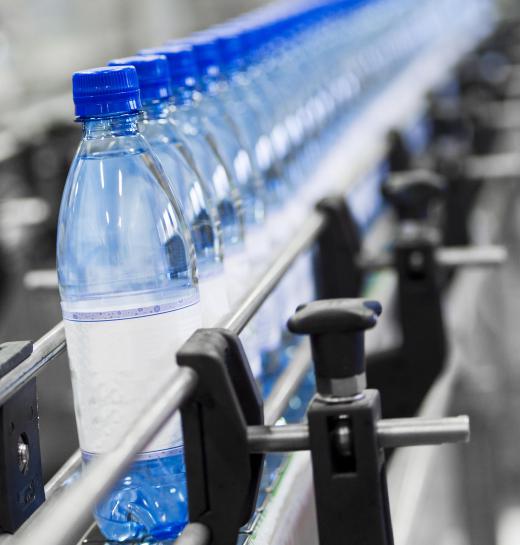A bowl feeder is a device used to feed parts to an assembly line or piece of manufacturing equipment. Depending on the type of equipment in use, these feeders are capable of supplying hundreds or thousands of parts per minute. The bowl feeder is designed to sort the parts and align them in a precise manner based on the type of object they are being used to make. Each feeder must be matched to the needs of each specific application in order to maximize production rates and keep mistakes to a minimum.
Bowl feeders can be found in a wide variety of assembly and manufacturing applications. For example, they may be used to supply bottle caps along a beverage bottling line, or individual components to an electronics assembly line. These feeders are also used to manufacture consumer goods, or to package many different types of objects.

In a standard application, the bowl feeder sits below a hopper or bin. Workers fill the hopper with bulk material, and these objects fall into the feeder below. Based on the type of system and how it is programmed, individual components exit the feeder at specific intervals and enter the next step in the assembly process. Each bowl feeder uses special sensors to spot jams or parts that may be misaligned. These sensors signal the line to shut down or slow production, and also alert workers to a potential problem with the feeder.
Buyers can choose from several types of bowl feeders to meet the needs of each type of manufacturing or industrial application. Vibrating feeders are the most common, and use a vibrating motion to direct parts to the exit chute. Others use an air track, similar to those found on air hockey tables. Centrifugal feeders rotate rather than vibrate, and the centrifugal force pulls objects to the exit chutes at the sides of the bowl. Finally, conical or stepped bowl feeder units feature an inclined shape that draws parts towards an exit path at the center of the bowl.
These bowl feeders offer many advantages to business owners who are looking to keep production costs low while maximizing output. They allow parts to be fed into the assembly line very quickly, and at precise intervals. By replacing manual laborers with bowl-feeding units, businesses can cut labor costs and produce products more economically.
One drawback to the bowl feeder is its precise operation. The feeder must be matched exactly to each application, and may not be transferable between products. Some types of feeders, particularly those that rely on vibration, also require frequent maintenance and repairs.
